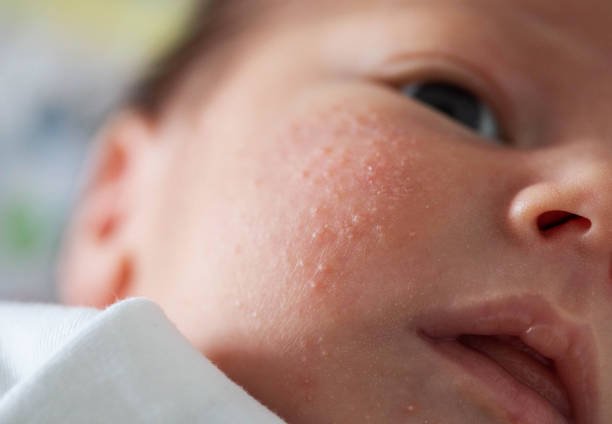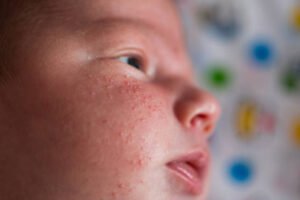
Understanding Milia
What Are Milia?
Milia Treatment in Abu Dhabi are small, white cysts that form on the skin, commonly appearing on the face, especially around the eyes and cheeks. They are often mistaken for whiteheads but are different in nature. While whiteheads are caused by clogged pores, milia form when keratin (a protein found in skin) becomes trapped beneath the surface. They can appear in clusters and are usually harmless, although they can be a cosmetic concern for many individuals.
Common Causes of Milia
Several factors can contribute to the formation of milia, including:
- Skin Damage: Sun damage or injury can lead to the development of milia.
- Heavy Skincare Products: Thick creams and oils may clog pores and contribute to their formation.
- Genetic Factors: Some people may be more predisposed to developing milia due to their genetic makeup.
- Hormonal Changes: Hormonal fluctuations can also play a role in the appearance of milia, particularly in newborns.
Types of Milia
Milia can be categorized into different types based on their occurrence:
- Primary Milia: These are the most common type and often appear spontaneously, typically affecting people of all ages.
- Secondary Milia: This type develops due to skin damage or conditions, such as blistering or prolonged use of certain topical treatments.

Symptoms of Milia
Identifying Milia
Milia are small, firm, white or yellowish bumps on the skin. They may resemble tiny pearls and usually range in size from 1 to 2 millimeters. Unlike acne, they do not typically cause redness or inflammation.
When to Seek Professional Help
If you notice persistent milia that do not improve with at-home treatments, or if they are causing significant discomfort or distress, it may be time to consult a dermatologist. Professional evaluation can ensure that what you are experiencing is indeed milia and not a different skin condition.
Treatment Options for Milia
At-Home Treatments
While milia often resolve on their own, there are several at-home treatments that can help expedite the process.
Exfoliation Methods
Regular exfoliation can help remove dead skin cells and prevent clogged pores. Consider using:
- Chemical Exfoliants: Products containing alpha-hydroxy acids (AHAs) or beta-hydroxy acids (BHAs) can effectively slough off dead skin.
- Physical Exfoliants: Gentle scrubs can also aid in exfoliating the skin.
Topical Treatments
Over-the-counter creams containing retinoids can promote cell turnover, which may help prevent the formation of milia. Look for products that are specifically designed to be non-comedogenic (won’t clog pores).
Professional Treatments
If at-home treatments are ineffective, several professional options are available in Abu Dhabi.
Extraction Procedures
A dermatologist can safely remove milia using a sterile needle or blade. This procedure is quick and often provides immediate results.
Laser Therapy
Laser treatments can help target milia and promote overall skin rejuvenation. This method is particularly effective for larger or stubborn cysts.
Cryotherapy
Cryotherapy involves freezing the milia with liquid nitrogen. This method can be effective for quickly removing milia and minimizing their recurrence.
Aftercare and Prevention
Post-Treatment Care
After undergoing any professional treatment, it’s crucial to follow your dermatologist’s aftercare instructions. This may include:
- Avoiding direct sunlight and using sunscreen.
- Refraining from heavy skincare products for a specified period.
- Keeping the treated area clean and moisturized.
Preventive Measures
To reduce the likelihood of milia developing in the future, consider the following preventive measures:
- Use Non-Comedogenic Products: Choose skincare and makeup products that are labeled as non-comedogenic.
- Maintain a Consistent Skincare Routine: Regular cleansing and exfoliation can help keep your skin clear.
- Stay Hydrated: Drinking plenty of water can improve your skin’s overall health.
Choosing a Dermatologist in Abu Dhabi
Factors to Consider
When seeking a dermatologist in Abu Dhabi, consider the following:
- Experience and Credentials: Look for a dermatologist with extensive experience in treating milia and other skin conditions.
- Clinic Reviews: Research patient reviews and testimonials to gauge the quality of care.
- Treatment Options: Ensure the clinic offers a range of treatment options tailored to your needs.
Top Dermatology Clinics in Abu Dhabi
Several reputable dermatology clinics in Abu Dhabi specialize in treating milia and other skin concerns. Some of the top clinics include:
- Cleveland Clinic Abu Dhabi: Known for its comprehensive dermatology services and advanced treatment options.
- American Hospital Dubai: Offers a range of cosmetic dermatology treatments with experienced dermatologists.
- Al Zahra Hospital: Provides personalized care and various dermatological treatments.
Conclusion
Summary of Effective Treatment Options
Treating milia effectively involves a combination of at-home and professional options. From regular exfoliation and topical treatments to professional extraction and laser therapy, there are various methods to manage and remove milia.
Final Thoughts on Managing Milia
Milia are generally harmless, but they can be bothersome for many individuals. By understanding the causes, symptoms, and treatment options available, residents of Abu Dhabi can effectively manage and treat milia, ensuring their skin remains healthy and clear. Always consult with a qualified dermatologist to choose the best treatment plan for your specific skin type and concerns.


